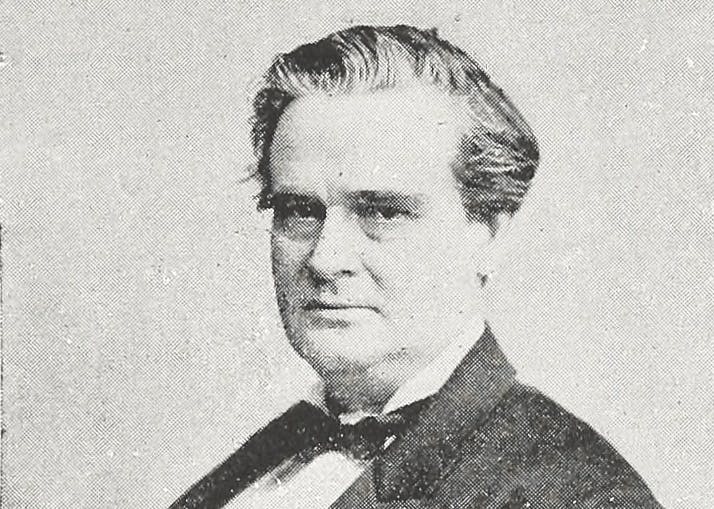The Mengele of Gynecology
J. Marion Sims experimented on slave women because there was nothing that could not be done to them, nothing to prohibit turning their lives into a hell akin to what H.G. Wells imagined in ‘The Island of Dr. Moreau.’

‘Say Anarcha: A Young Woman, a Devious Surgeon, and the Harrowing Birth of Modern Women’s Health’
By J.C. Hallman
Henry Holt, 448 pages
Anarcha, who according to her surgeon, J. Marion Sims, was “probably mulatto,” became one of his prime experiments in gynecological operations. She is the unsettling subject of J.C. Hallman’s “comprehensively researched work of speculative nonfiction.”
Sims was a quick man with a scalpel, chainsaw, and other instruments of his own invention, operating on cancerous tumors and on the fistulas that plagued slave women. Sometimes called the Mengele of gynecology, Sims got his start in Alabama unencumbered by medical ethics, which he saw as an impediment to the advancement of science.
The Mengele comparison, like all analogies, distorts as much as it illuminates, as Sims developed relationships with and between his slave subjects — so that some of them, like Anarcha, became, in effect, nurse practitioners as he explained to his victims the purpose of his experimental surgeries.
Unlike many speculative biographers, Mr. Hallman eschews phrases like “must have been” and words like “probably” and “perhaps” in order to create Anarcha as a fully rounded character who rivals in importance the well-documented life of her surgeon/tormentor — once so famous he became the president of the American Medical Association, celebrated for his pioneering surgeries.
Mr. Hallman’s biography is phenomenal, remarkable, and questionable. He reports that his reconstruction of Anarcha’s life is based on 5,000 notes and sources. Mr. Hallman seems at various points to cross the line between fiction and fact, yet everything, he asserts, is checkable: AnarchaArchive.com.
Like Sims, Mr. Hallman is bold, but not unscrupulous. Sims hid his failures and lied about his so-called successes. He thought wrecking women’s lives in the noble quest to cure them (he did heal a few) would make him astronomically famous and wealthy.
Mr. Hallman’s narrative contains numerous references to comets — particularly to the 1833 phenomenon popularly known as the year the stars fell, the Leonid meteor storm that many people, including slaveholders, saw as a portent.
In William Faulkner’s novel “Go Down, Moses,” Isaac McCaslin reads about the year that the stars fell in his uncle’s plantation commissary books and connects that cosmic event with his discovery that his white slaveholder grandfather coupled with his own slave daughter to produce a mulatto son. McCaslin renounces his patrimony, refusing to take possession of the family plantation.
Others saw in the starry sky a metaphor signifying the human desire to be awed, and Sims took advantage of that yearning to treat human achievers as comets, to soar along with him as medical science putatively progressed. A pioneer in fudging data, he fell like a star on his times, hoodwinking those who reveled in the pleasure of feeling amazed by his claims to have closed the holes in women that had made their reeking daily lives such a misery.
In truth, Sims experimented on slave women because there was nothing that could not be done to them, nothing to prohibit turning their lives into a hell not so different from what H.G. Wells imagined in “The Island of Dr. Moreau,” the story of a mad scientist who creates hybrid beings from animals via vivisection.
Anarcha, the improbable survivor of Sims’s botched experimental surgeries, bore children, married, and cared for her community while Sims, whom she had once restored to health from a malaria attack, claimed her as his triumph even as she kept returning to public attention in reports that nearly threatened to expose his disastrous, criminal procedures.
Mr. Hallman’s biography ends, though, not with Sims or with Anarcha, but with the surgeons in 20th and 21st century Africa, in Ethiopia and Uganda, who discovered the dire conditions of women with fistulas, and had to replicate — with much greater humanity, honesty, safeguards, and success — the Sims surgeries.
Sims was a man of his time, frail and unsure of his masculinity, who thought it “manly” to operate on fistulas and cancers that often returned with a vengeance never visited on the man himself — until, of course, in what Mr. Hallman is able to disclose in his haunting, poignant, and ultimately uplifting book.
Mr. Rollyson is the author of “Uses of the Past in the Novels of William Faulkner.”

